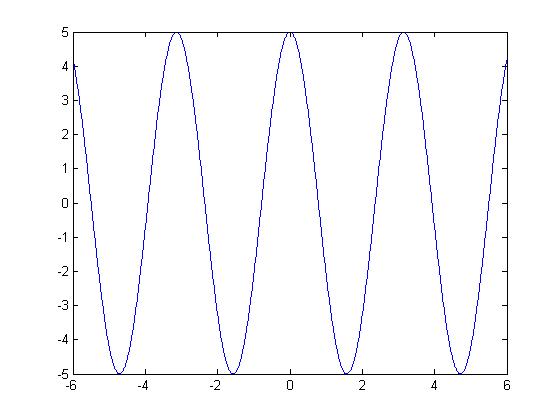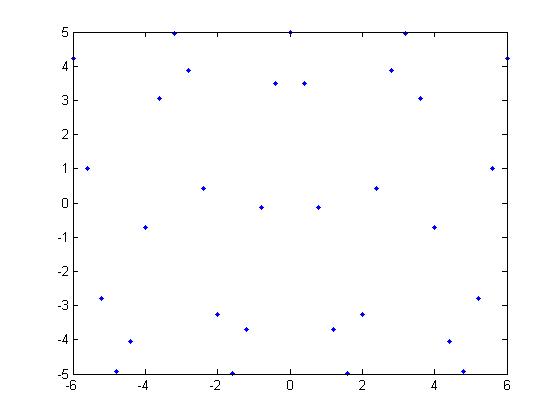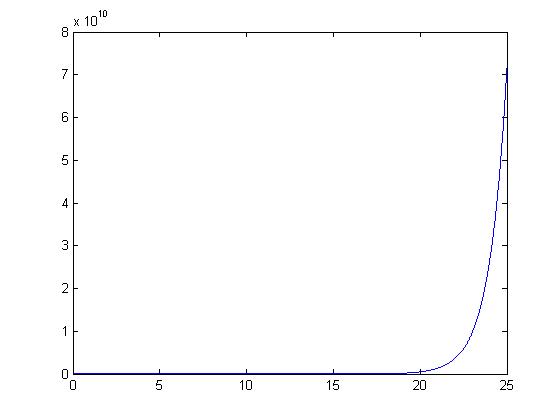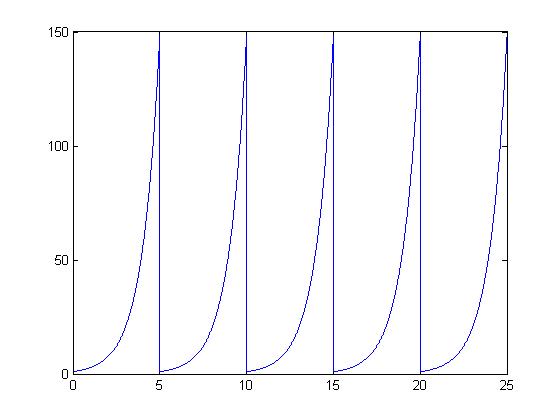(New page: == Question 1 == Signal: f(t) = 5cos(2t) Image:5cos2x.jpg Periodic DT Signal: Non-Periodic DT Signal:) |
|||
| (2 intermediate revisions by the same user not shown) | |||
| Line 5: | Line 5: | ||
[[Image:5cos2x_ECE301Fall2008mboutin.jpg]] | [[Image:5cos2x_ECE301Fall2008mboutin.jpg]] | ||
| − | Periodic DT Signal: | + | Periodic DT Signal: Using a sampling rate of Ts=0.1 we get the signal |
| − | Non-Periodic DT Signal: | + | [[Image:Periodichw2_ECE301Fall2008mboutin.jpg]] |
| + | |||
| + | Non-Periodic DT Signal: However, the signal becomes non-periodic if we change the sampling rate to Ts=0.4 | ||
| + | |||
| + | [[Image:Nonperiodichw2_ECE301Fall2008mboutin.jpg]] | ||
| + | |||
| + | |||
| + | |||
| + | == Question 2 == | ||
| + | |||
| + | Signal: <font size="4"><math>f(t)=e^t</math></font> | ||
| + | |||
| + | [[Image:Nonperiodicexp_ECE301Fall2008mboutin.jpg]] | ||
| + | |||
| + | As a periodic function: | ||
| + | |||
| + | [[Image:Periodicexp_ECE301Fall2008mboutin.jpg]] | ||
Latest revision as of 13:08, 11 September 2008
Question 1
Signal: f(t) = 5cos(2t)
Periodic DT Signal: Using a sampling rate of Ts=0.1 we get the signal
Non-Periodic DT Signal: However, the signal becomes non-periodic if we change the sampling rate to Ts=0.4
Question 2
Signal: $ f(t)=e^t $
As a periodic function:






